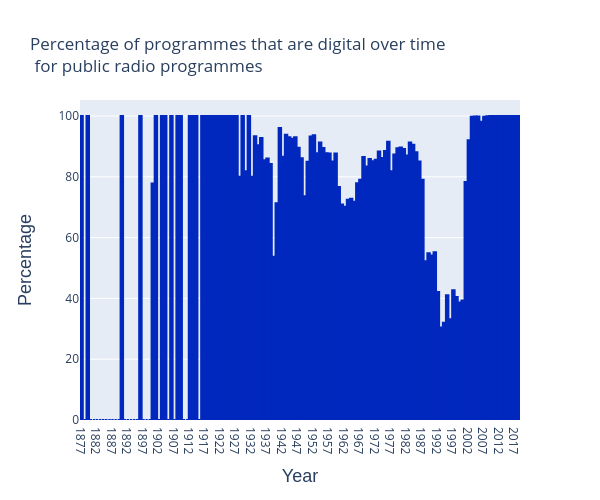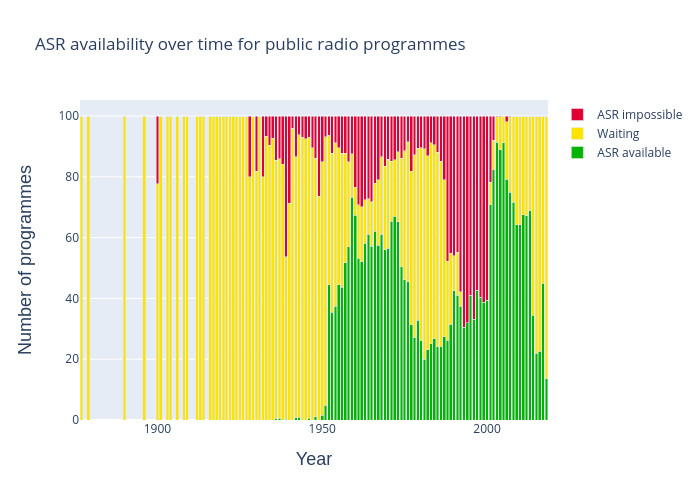This is the old radio collection of The Netherlands Institute for Sound and Vision (NISV).It is deprecated and has been removed from the Media Suite. Use the Sound and Vision Radio Archive instead. The information below is kept for reference purposes.
The NISV is one of the most important Dutch audiovisual archives, which collects, looks after, and provides access to over 70% of the Dutch audio-visual heritage.
The following figures give answers to common questions about the composition of this collection:
What part of the collection is included in the Media Suite?
Via the Media Suite, The Netherlands Institute for Sound and Vision offers access to its entire radio collection, consisting of 405 526 items (as July, 2018).
What years does the archive cover?
The radio collection is one of the oldest collections of Sound and Vision. The old NISV radio collection includes items from 1877 to 2018. Unfortunately, the first broadcast of the Hilversumsche Draadlooze Omroep (HDO) from 1923 does not exist because equipment for recording the live broadcasts simply did not exist.

Figure 1: Number of programs in the archive over time
How often is the data updated in the Media Suite?
The latest update to this collection was done in July, 2018. Material since that date is available in the new Sound and Vision Radio Archive
What kind of media is included?
Since this is the radio collection, most items are audio resources of the following genres:

Figure 2: Distribution of programmes over genres
What portion of the collection is digital?

Figure 3: Percentage of material that is digital over time
Does the collection include enrichments?
Progressively, the NISV audiovisual collection is being enriched with automatic speech recognition (ASR) transcripts. ASR enrichments are available for the following items:
- Radio 1 (Hilversum 1, Radio 1, NPO Radio 1)
- Radio 5 (Hilversum 5, Radio 747, 747 AM, Radio 5, NPO Radio 5, NPO Radio 5 Nostalgia)
- Source catalogs (items from the Radio Programma, Weken Nederlandse Radio, and Hoorspelen collections)
- Television (news and current affairs)
The process is still ongoing. New transcripts will be added to the new Sound and Vision Radio Archive.
This was the status on November 2018 for the radio collection:

Figure 4. ASR availability over time (This graph shows the number of programmes with a speech recognition
transcript available per year (green). The yellow bars are the audio-visual programmes that are waiting for ASR, the red bars the audio-visual programmes that cannot currently be processed with speech
recognition, as they have no copy in the media archive.)
Where to find more information?
How to search in this collection?
To search the content of this collection, use the Media Suite’s Search tools.



